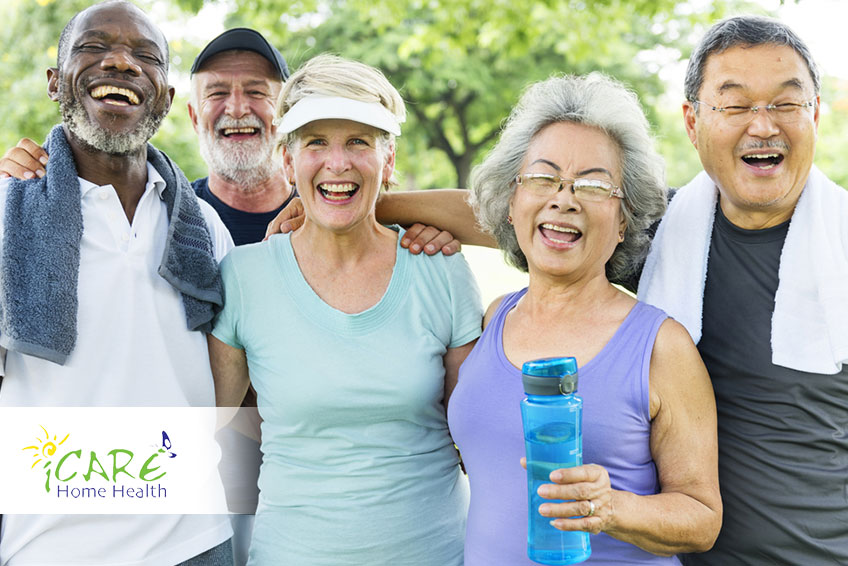Active Ageing

As we age, staying active typically becomes less of a priority, however that’s when it is more important than ever. Research shows that regular exercise can ward off strokes, prevent falls, and improve your memory! The National Institute on Aging found that even moderate exercise increased the size of the hippocampus which is the part of the brain that plays a role in memory.
Staying fit comes down to you and your comfort level. If you were a champion tennis player in your earlier years you may still be able to play just not at the level you once did. There is no such thing as being too old to exercise!
Being sedentary is unhealthy at any age but more so for the senior population. To make sure you can stay active and remain safe while doing so, follow these tips:
- Pay attention to your body: Be aware of pain or stiffness in joints or muscles and move accordingly, do what you can and don’t risk injury
- Always warm up before exercise: it is important at any age to warm up before any exercise to get the blood flowing to muscles to avoid injury. Warming up can be a brisk walk, gentle stretching or walking on a treadmill. Also cool down at the end of exercise to slowly decrease your heart rate.
- Drink plenty of water: Staying hydrated is always important and especially on hot days. Seniors didn’t grow up with a water bottle attached to their bodies like we do today, but it is vital to keep the body hydrated.
- Use proper equipment: Always wear a helmet when cycling and comfortable, lace up or Velcro fastening shoes when doing anything else. Avoid injury.
- If at first you don’t succeed: Try again! If you discover that bowling hurts your back for instance, don’t give up, find something else that keeps your body moving and is less strenuous. Maybe walking is more suited to your ability.
- A good rule to follow to measure intensity: If you can comfortably carry on a conversation during exercise you aren’t working hard enough, if you are gasping for air, you are working too hard.
Some ideas of exercises to help keep your body mobile:
- Yoga or Pilates: Senior centres, local gyms and community centres offer these types of classes, they are beneficial for stretching and staying flexible. However, you don’t need to go out to do simple stretches every day. The safest way to stretch is to sit or lay down, especially if your balance tends to be unstable.
- Strength exercises: strong muscles are important for daily living – even for the simplest of tasks like getting out of bed, or carrying groceries. Try to perform strength exercises on all of your major muscle groups at least twice a week for 30-60 minutes each time. Start with light weights and move up as you gain strength. Simple exercises such as a push up against a wall with the weight of your body is enough to build strength in your arms if done on a regular basis. For legs, try sitting in a chair or lay flat then lift your leg up and down in a series of repetition to build the muscles. Be sure to do what is comfortable for you and avoid injury.
- Aerobic Exercises: getting your heart rate up can benefit your entire body and make it easier to perform every day activities. Increasing your heart rate through exercise will help to control blood pressure, increase stamina and energy and contributes to bone strength. Simple cardio exercises such as walking, swimming (also helps to ease joint strain), cycling and more ambitious seniors may enjoy hiking (always wear proper footwear!) and jogging.
Exercising with a friend or in a group can increase motivation and build a social network. Always consult with your Doctor when planning a new exercise regimen if you have a medical condition.

